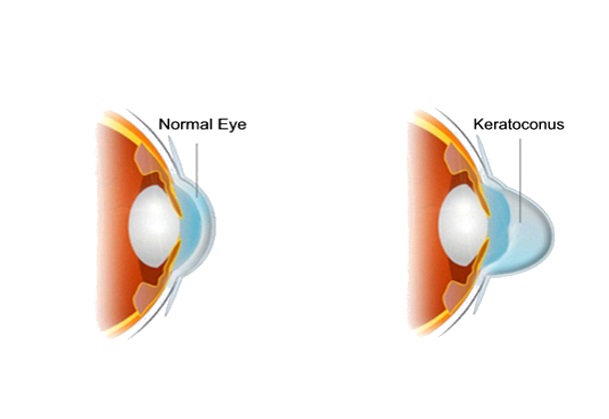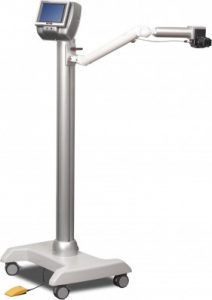Corneal Cross-Linking CXL for Keratoconus Disease Treatment
CXL Discount Offer 50000
Keratoconus is a disease of the cornea of the eye, the transparent front part of the eye that covers the iris and the pupil. It is a degenerative disorder, whereby the cornea thins down, and its shape changes, making it more conical. Because of the irregular shape of the cornea, light cannot be focused correctly on the retina, causing blurred vision and sensitivity to light. This affects various activities, which you cannot do properly if you have keratoconus, such as driving, working on a computer, reading or watching television.
Keratoconus occurs when fibres (collagen) that hold the cornea together weaken, causing the cornea to lose shape. Keratoconus usually affects both eyes and is more common in younger people between ten to twenty five years of age. People with a family history of this disease are also at a higher risk. As it’s a degenerative disorder, it progression can not be predicted. This happen due to an imbalance of protective enzymes in the cornea or due to a previous eye disorder such as retinitis pigmentosa. It can also occur due to excessive exposure to the sun’s ultraviolet rays, wearing poorly fitting contact lenses, vigorous eye rubbing or chronic eye irritation.
Keratoconus Symptoms

As keratoconus is a progressive disease, the symptoms worsen over time. Initially you will experience slightly blurred vision and increased sensitivity to light, as well as symptoms such as:
-
Vision distortion at all distances
-
Poor night vision
-
Sensitivity to light
-
Glare
-
Mild eye irritation
As the disorder progresses, other signs and symptoms will also be exhibited, such as:
-
Increasing sensitivity to light
-
Frequent changes in eye glasses prescription
-
Inability to wear contact lenses
-
Sudden worsening of symptoms
-
Increased blurring and distortion of vision
-
“Ghost” images – the appearance of several images when looking at one object
-
Noticeably worse vision in one eye
If you suspect you or your child may have keratoconus, consult our eye specialist to get an expert medical opinion and guaranteed quality health care. Remember all eye doctors are not fully trained for keratoconus treatment.
CXL
Corneal collagen crosslinking (CXL C3R) is a successful treatment to stop patient’s keratoconus getting worse. Keratoconus gets worse due to the shape of your cornea becoming more like a cone. Your eye doctor may use the term “progression of your keratoconus”. This happens due to patient’s cornea being too flexible. CXL makes the cornea stiffer and prevent any further shape change.
If the cornea is allowed to change shape, progressive sight loss will occur. In time, your glasses may stop giving you clear vision. If left untreated, the shape of the cornea will continue to worsen meaning you would eventually need a corneal transplant. By performing early CXL the corneal transplantation for keratoconus eyes is avoided. The sooner CXL treatment is done the better it is for the vision of the patient.
At Smile laser eye centre Multan Vitamin B2 drops (Riboflavin) are dropped on to the cornea for 20 minutes. A special UV light is then placed in front of your eye for 10 minutes. The combination of Riboflavin and UV light causes extra connections (cross links) to form between the collagen fibres of the cornea. This results in improved and strong cornea.

Why do I need corneal collagen crosslinking CXL?
CXL is recommended to patients showing signs of keratoconous. Your eye doctor will consider your spectacle prescription, your corneal topography (a special map taken of the front of your eye) and your vision when making the decision to offer CXL.
Keratoconus and pellucid marginal degeneration are the most common indications for CXL. Currently CXL is the only treatment proven to prevent keratoconus from getting worse. It can also improve the shape of your cornea. Also after cross-linking your vision with spectacles can be improved.